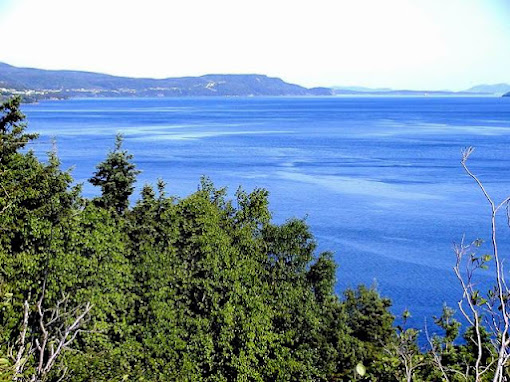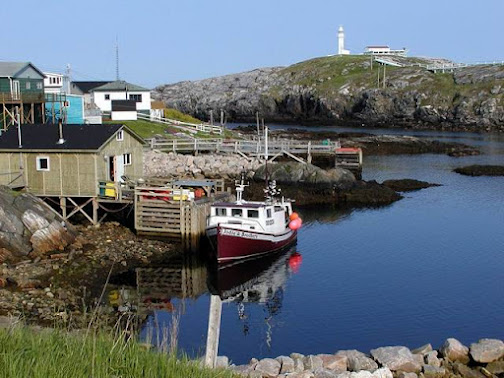Eating, while checking Email, is not thought to be a hazardous occupation. So
imagine my surprise when, in the middle of a bite of low-fat sausage on
toast and a mouse click, a strong, persistent pain struck me in the
left chest. It was scary! The rational part of my brain told me that it was only some kind of gas pain – not to worry. But it was in a different place than normal for gas pains and the pain radiated around the left side of the chest. Pat was taking her morning walk, but I guessed she would return shortly. I must decide what to do. Do I ignore the pain or should I tell Pat and check it out at a hospital? Pat appeared within minutes after the pain had struck, so I told her. She presented me with the appropriate look of concern. So, what to do next? Call 911, find a hospital and visit their emergency room or find some local doctor? I searched the Web quickly and found the phone number of the Stanford Hospital. But then, on a whim, I decided to call the receptionist at our RV Park. “I have some chest pain and would like to seek some medical advice. What hospital would you recommend?”
“It just so happens that I work at the Stanford Hospital,” she said. “But my advice is to go to Sequoia Hospital in Redwood City. They have a superior cardiology unit and are closer. You might first check with a highly recommended local physician.” She gave me his phone number and I phoned him.
A phone recording said, “Our office does not open till 9:30; please leave a message.” I hung up.
By now I had convinced myself that this might be something serious and I might not live till 9:30 a.m. However, I could not convince myself that this situation was serious enough to call 911. A vision appeared of doctors, nurses and curious onlookers pointing fingers at me and laughing. Everyone would think me silly to call an ambulance when anyone in their right mind could clearly see that I did not need one. Then,
after I did a quick mental calculation of the cost of an ambulance, I
decided that Pat could drive me to the hospital more quickly and much
cheaper than was possible by ambulance. Pat agreed.
By then the pain had subsided somewhat but intensified when I stood up to make another phone call. The receptionist at the Sequoia Hospital did not hesitate when I described my symptoms. “Come immediately,” she said. “We will have a warm bed ready for you.”
The pain had struck at 8:08 a.m. and we arrived at the hospital about 9:15. By now the pain had subsided even more, and I was feeling a little silly, but still concerned. “If I do not have this thing checked out, I will worry all day that maybe it was really something severe,” I thought.
The nurses at the Cardiology Unit quickly assured me that I had done the right thing. “Yesterday, a couple guys came in with symptoms similar to yours and they were in the midst of a heart attack.”
“Wow! You guys really know how to make a fellow feel good,” I thought.
Quickly I found myself lying on a bed in the emergency
room while a very competent and professional team of nurses led by an
administrative nurse, named Sheri Sassorini, took an EKG, a blood
sample, temperature, blood pressure, gave me a nitroglycerine tablet to
dissolve under my tongue, some aspirin for the headache that the
nitroglycerine would give me, took a chest x-ray and stuck an oxygen
tube in my nose. My heart rate and blood pressure were monitored constantly. The
heart monitor was like those used on TV shows like ER – you know, the
ones that give a flat line when the patient’s heart stops beating and
somebody starts pounding, cutting or shocking the dead back to life. So I watched intently for a “flat line,” but saw only a steady, rhythmic beat. Incidentally, I saw no tunnels with a bright light at the end.
I was admitted without first verifying that I could pay the bill – amazing!. Pat took care of that by showing them our Blue Cross cards.
Now, almost all the pain was gone; I felt fine and was ready to leave that hospital as fast as I could. “No,
you need to see the cardiologist first,” was their reply when I
suggested that I was taking up valuable space in their emergency room. While waiting, I remembered the digital camera in my pocket. “You might as well take a photo of me,” I suggested to Pat.
“Why?” she asked?
“Oh, just humor me!” I replied.
Doctor Lipscome came in the room and announced that
“Doctor Hinohara will chat with you in about 45 minutes after the EKG
and other information is evaluated. He may wish for you to take a treadmill, stress test. We have ruled out a heart attack, but there is about a 50:50 chance that you may have angina.”
A nurse asked how I felt and I replied that I felt fine. She explained that I was the only one in the ER at the time and that it is usually very busy. The
nurses and other staff congregated in the nurse area for a while and
filled the building with sounds of conversations and laughter. If you have ever watched ER on television, you would recognize the scene, except that in Redwood City, there was no pandemonium. As the morning wore on, they became much busier. We heard a loudspeaker announce a code three in the emergency room – whatever that meant.
About noon, an orderly came, seated me in a wheelchair
and spent a little time searching the maze of hallways and rooms to find
the treadmill room. By now I was “feeling my oats” and decided to make the most of this experience. I wanted to document some of the things I was experiencing. Upon entering the treadmill area, I asked a nurse named Pat if I could take her photograph. Pat said, “No! I have this thing about photos. I didn’t even have photos taken during my wedding.”
Undaunted, I asked the next nurse for her photo. She looked at me quizzically, then said OK. The badge she wore said, “Joan Hardy.” She posed beside the ultrasound monitor and explained what would transpire. “You
will walk on the treadmill until your heartbeat reaches a target level,
then we will rapidly move you back to the gurney where we can take some
ultrasound photos of your heart.” I signed a form releasing the hospital from responsibility in case the stress test resulted in some tragic consequence. When
she started to hook up the wires to my chest, she explained that since I
was so “wooly,” it would be necessary to shave patches where she could
attach the wires. When she had attached all the wires, she asked if I wanted her to take a photo of me on the treadmill.
“Sure,” I responded. Then,
with classical music playing on her radio and a poster of wildflowers
from the Kaibab National Forest of Arizona overlooking the proceedings,
the first pre-test images began to appear on the monitor. I quickly took a photo of the monitor. “This is to prove to my sisters that their curmudgeonly brother really does have a heart,” I explained.
When another doctor entered to supervise, the stress test began. At a heartbeat rate of 158, they quickly moved me, with all the attached wires, to the test platform. “Now breath out and hold,” I was ordered. I found that when breathing heavily, it is difficult to exhale and hold your breath very long. But we somehow managed and I was told, “You did a very good job.” I watched the monitor as my heart pumped blood rapidly.
“It looks good to me,” I said. “How does it look to you?”
“OK,” Joan said.
So we had ruled out both a heart attack and angina. So what caused the pain? The nurses did not know. The aftercare instructions read: “Atypical chest pains.” An unofficial translation might be: This guy is just a hypochondriac, not to worry. I was, of course, relieved to know that my heart appeared healthy.
Upon leaving the hospital, I asked the doctors, nurses, and receptionists to pose for a photo. They readily agreed. I left the hospital on very amicable terms with the staff. They had all been very friendly and professional. It had been an interesting experience and I had photos to prove it. However, I had not yet seen the bill. When I see it, I really might have a real heart attack.
Upon returning home to our motorhome, I switched on the TV. A “Victoria’s Secret” commercial appeared and I knew instantly that I was still alive.
















































